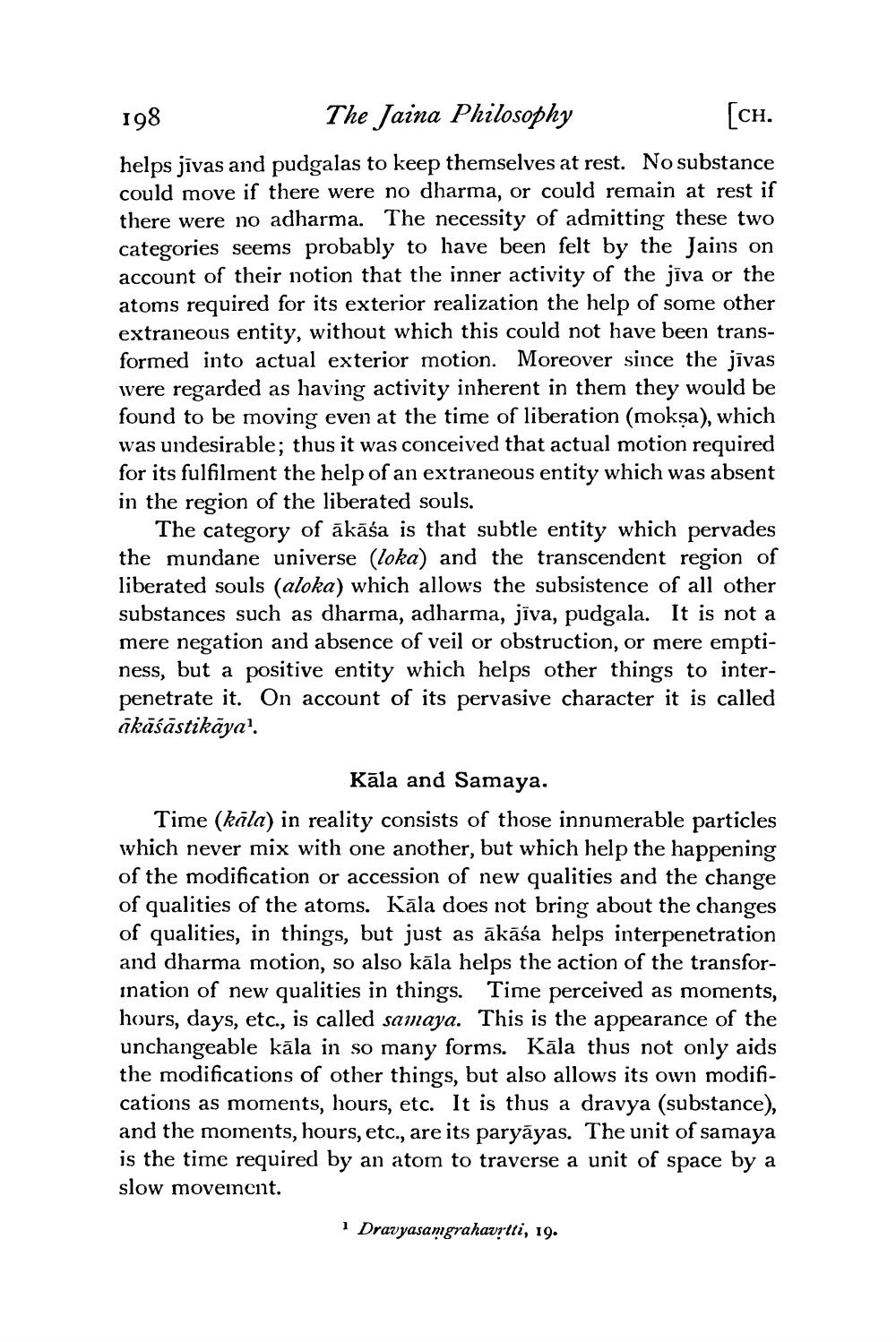________________
198
The Jaina Philosophy
[CH.
helps jīvas and pudgalas to keep themselves at rest. No substance could move if there were no dharma, or could remain at rest if there were no adharma. The necessity of admitting these two categories seems probably to have been felt by the Jains on account of their notion that the inner activity of the jiva or the atoms required for its exterior realization the help of some other extraneous entity, without which this could not have been transformed into actual exterior motion. Moreover since the jivas were regarded as having activity inherent in them they would be found to be moving even at the time of liberation (mokṣa), which was undesirable; thus it was conceived that actual motion required for its fulfilment the help of an extraneous entity which was absent in the region of the liberated souls.
The category of ākāśa is that subtle entity which pervades the mundane universe (loka) and the transcendent region of liberated souls (aloka) which allows the subsistence of all other substances such as dharma, adharma, jīva, pudgala. It is not a mere negation and absence of veil or obstruction, or mere emptiness, but a positive entity which helps other things to interpenetrate it. On account of its pervasive character it is called ākāśāstikāya1.
Kāla and Samaya.
Time (kāla) in reality consists of those innumerable particles which never mix with one another, but which help the happening of the modification or accession of new qualities and the change of qualities of the atoms. Kāla does not bring about the changes of qualities, in things, but just as ākāśa helps interpenetration and dharma motion, so also kāla helps the action of the transforination of new qualities in things. Time perceived as moments, hours, days, etc., is called samaya. This is the appearance of the unchangeable kāla in so many forms. Kāla thus not only aids the modifications of other things, but also allows its own modifications as moments, hours, etc. It is thus a dravya (substance), and the moments, hours, etc., are its paryāyas. The unit of samaya is the time required by an atom to traverse a unit of space by a slow movement.
1 Dravyasamgrahavṛtti, 19.




